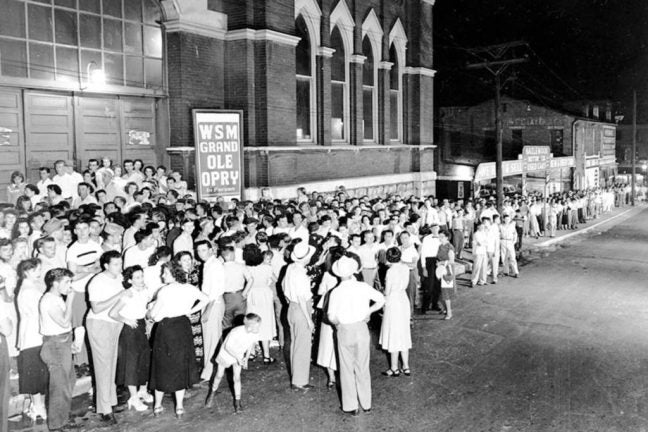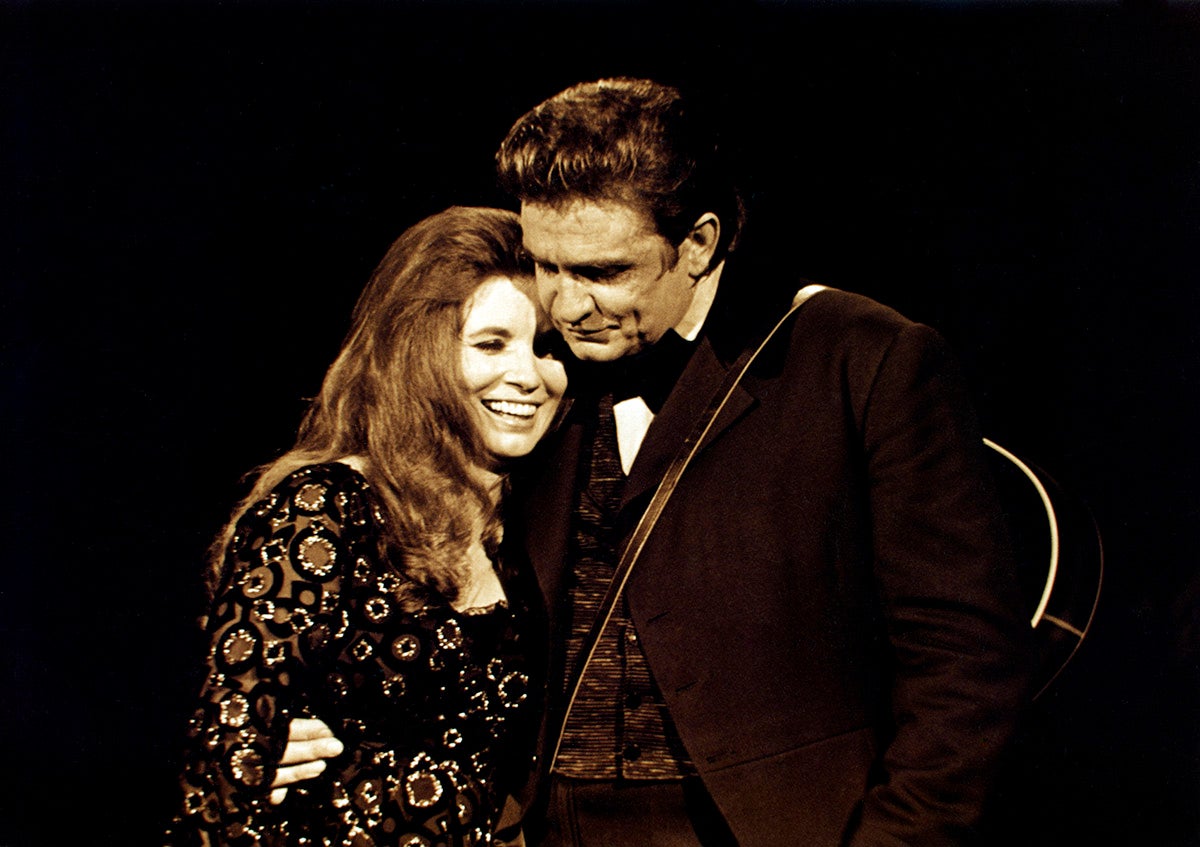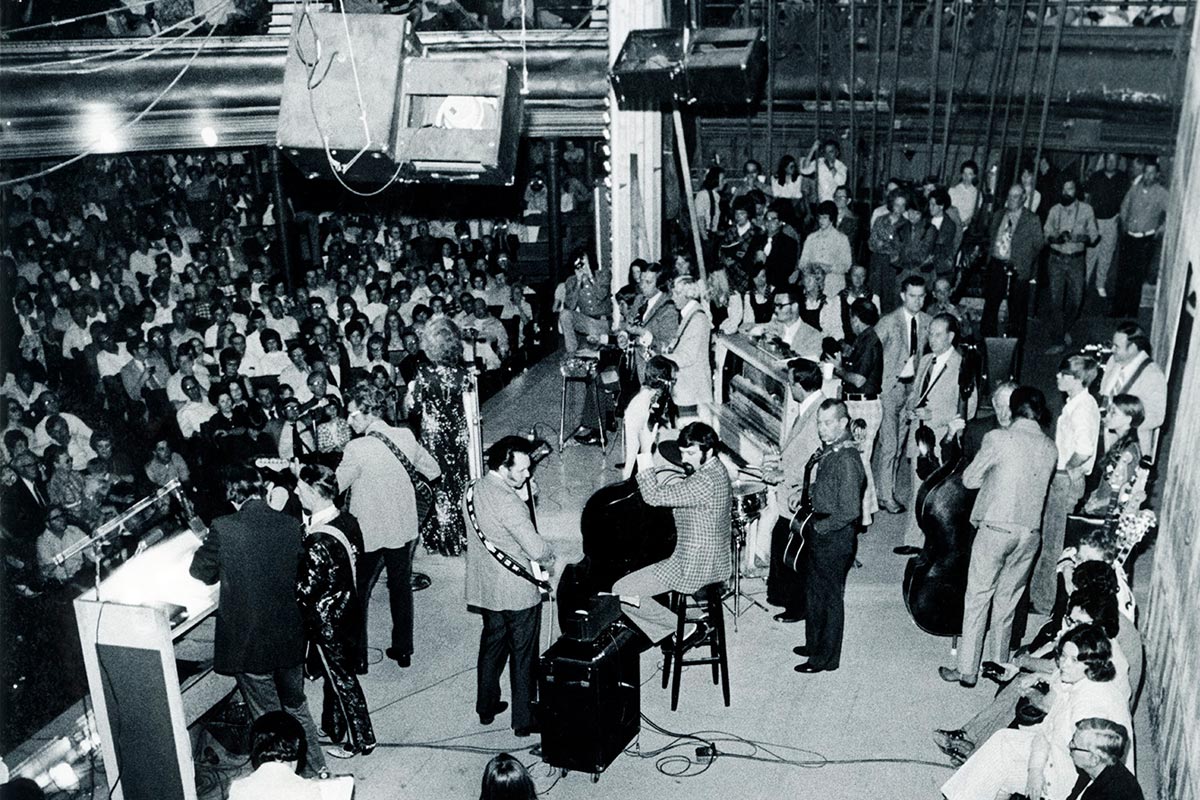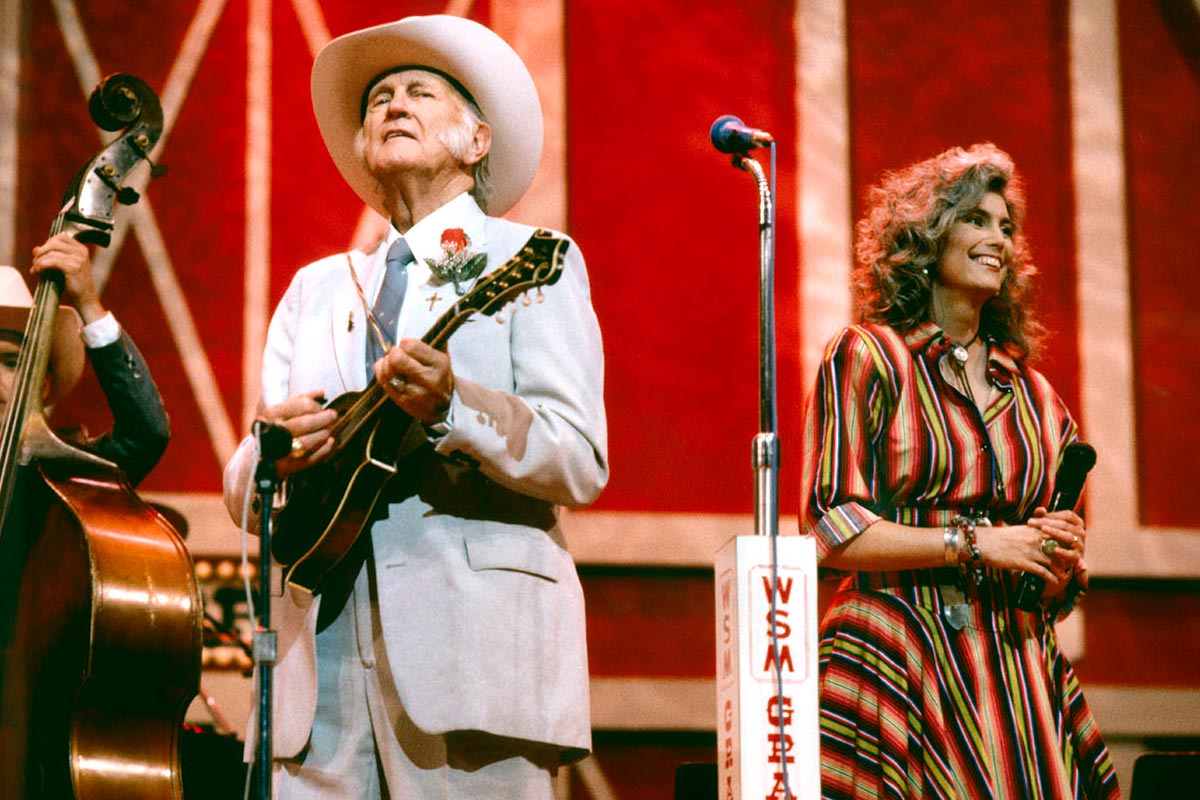The Ryman's Biggest Moments in Ken Burns' Country Music
Ryman Auditorium isn't just an actor in Country Music, a documentary by preeminent filmmaker Ken Burns. It's the star.
[caption id="attachment_13535" align="alignnone" width="721"] Even though the Ryman didn’t have air conditioning at the time, crowds couldn’t wait to get inside to watch the Opry, lining up around the block.[/caption]
Even though the Ryman didn’t have air conditioning at the time, crowds couldn’t wait to get inside to watch the Opry, lining up around the block.[/caption]
The popularity of the Opry soars in its new home
The Grand Ole Opry had four different homes before it moved to the Ryman in 1943, but the Ryman wasn’t like any of the venues that preceded it, earning the nickname “the Mother Church of Country Music.” During its formative years at the Ryman, the Opry established itself as the preeminent form of entertainment in a crowded field of barn dances. Hordes of Opry fans wrapped around the outside of the Ryman, eager to pack the auditorium’s pews. On Episode 5 of Ken Burns’ Country Music, former Opry manager Bud Wendell shared the fascinating tidbit that the average person drove 650 miles to visit Nashville, not just to hear the same music they heard on the radio — but to watch it play out before their very eyes. 
Johnny Cash’s career takes shape on the Ryman stage
It’s hard not to talk about Johnny Cash’s Nashville without mentioning the Ryman. On the evening of his Opry debut in 1956, he met fellow performer and future wife June Carter. The early days of their romance were a whirlwind, as was Cash’s relationship with the Opry. Under the influence of amphetamines in 1965, he smashed the footlights of the Ryman stage with a microphone stand. Opry management told him, “We can’t use you on the show anymore, John.” But Cash would make a triumphant return to the Ryman to record his own television variety show, The Johnny Cash Show, beginning in 1969. Country Music sheds a light on the Man in Black in revolutionary ways. [caption id="attachment_12591" align="alignnone" width="1200"] A clean-shaven Willie Nelson performs on the Opry early in his career.[/caption]
A clean-shaven Willie Nelson performs on the Opry early in his career.[/caption]
The alleyway between the Ryman and Tootsie’s Orchid Lounge became a creative breeding ground
Sharing an alleyway with the Ryman, honky-tonk Tootsie’s Orchid Lounge has a backdoor that is just a few steps from the Ryman’s artist entrance. The bar quickly became an unofficial greenroom for songwriters eager to get their material in front of performers. As the documentary reveals, one such songwriter was Willie Nelson, who performed the then-unknown song “Hello Walls” at Tootsie’s one evening. Nelson was willing to sell his songwriting credit for just $500, but Opry member Faron Young had a better offer: a $500 loan if Nelson promised that he wouldn’t sell the song to anyone else. It worked out for Nelson: His first royalty check was cut for $14,000.
The Byrds break new ground on the Opry at the Ryman
The Opry wasn’t ready for country rock in 1968 when The Byrds debuted the new musical style at the Ryman. As the first rock band to perform on the Opry, they were booed off the stage, but The Byrds paved the way for a number of successful crossover bands like Nitty Gritty Dirt Band, R.E.M., and Tom Petty and the Heartbreakers, all of which have performed at the Ryman in subsequent decades.
Marty Stuart comes face-to-face with the Mother Church
Marty Stuart is one of the Ryman’s greatest champions, performing here regularly during Opry at the Ryman and at his annual Marty Stuart’s Late Night Jam. The Ryman has long had a nearly mythical hold on Stuart. As a young boy in Mississippi, Stuart listened intently to the Grand Ole Opry on the radio, setting his sights on the Ryman as the place to play country music. At 13 years old in 1972, he came face-to-face with the Mother Church, arriving in Nashville at 2 a.m. on a bus, hoping to try out for Lester Flatts’ band. In Country Music, Stuart’s description of that first encounter with the Ryman left us with chills. “I walked around the corner of the Greyhound Station and there was the Ryman Auditorium. The building that I knew so much about,” he says. “And it was tired and it was weary, the paint was crackin’, and some of the windows were out, but it looked beautiful to me.” [caption id="attachment_12592" align="alignnone" width="1200"] The Opry has long been called "organized chaos" and March 15, 1974 was no exception as the show closed out a 31-year stint at the Ryman.[/caption]
The Opry has long been called "organized chaos" and March 15, 1974 was no exception as the show closed out a 31-year stint at the Ryman.[/caption]
The Grand Ole Opry’s final curtain call at the Ryman
When the Opry took up residence at the Ryman in 1943, it wasn’t the perfect venue, but it was the venue the Opry needed. The Ryman didn’t have air conditioning or dressing rooms, but its unrivaled acoustics were something special, its stage the perfect catapult for the careers of country music’s greatest stars. As the show grew and Nashville changed along with it, it was clear by 1974 that the Opry could use a new home. The Opry’s move to the newly built Grand Ole Opry House meant saying goodbye to an old friend. The Opry’s last show at the Ryman on March 15, 1974 was consequential, even if feelings were difficult to put into words. An Opry member for 58 years, Bill Anderson has never experienced another show like it, as he recounts in Burns’ film. “There was a feeling there of, um, it, it was like a feeling I, I’ve never felt at the Opry before,” he says in the film. “It was a little bit of sadness, a lot of sadness. It was a little bit of joy. There was anticipation. There was a fear of the unknown.” [caption id="attachment_12600" align="alignnone" width="1200"] Bluegrass patriarch Bill Monroe and Emmylou Harris perform together in an Opry appearance.[/caption]
Bluegrass patriarch Bill Monroe and Emmylou Harris perform together in an Opry appearance.[/caption]
A Ryman revival of a different kind, Emmylou Harris petitions for restoration
The Ryman hadn’t hosted a live show for nearly two decades when Emmylou Harris began searching for a Nashville venue where she could record a live album. The singer-songwriter, whose influences range from Joan Baez to Gram Parsons to Bill Monroe, selected the Ryman — equally eclectic in its musical repertoire — as the spot for her project. The building was in bad shape, so the live audience was contained to 200 people. It was the perfect place for Harris to perform impactful songs from the American cannon that were previously recorded by the likes of Johnny Cash, Tex Owens, and Bruce Springsteen. She invited one artist to perform along with her: Bill Monroe, who invented bluegrass on the very same stage a half century earlier. At the Ryman won a Grammy Award and drummed up interest to restore the building, which allowed the Ryman reassumed its position as one of Nashville’s premiere active music venues.
Stay in Touch
What’s almost as iconic as visiting the Ryman? Always having the inside scoop!
Sign up for exclusive updates, offers, and events, so you never miss out on what’s happening at the Mother Church.





